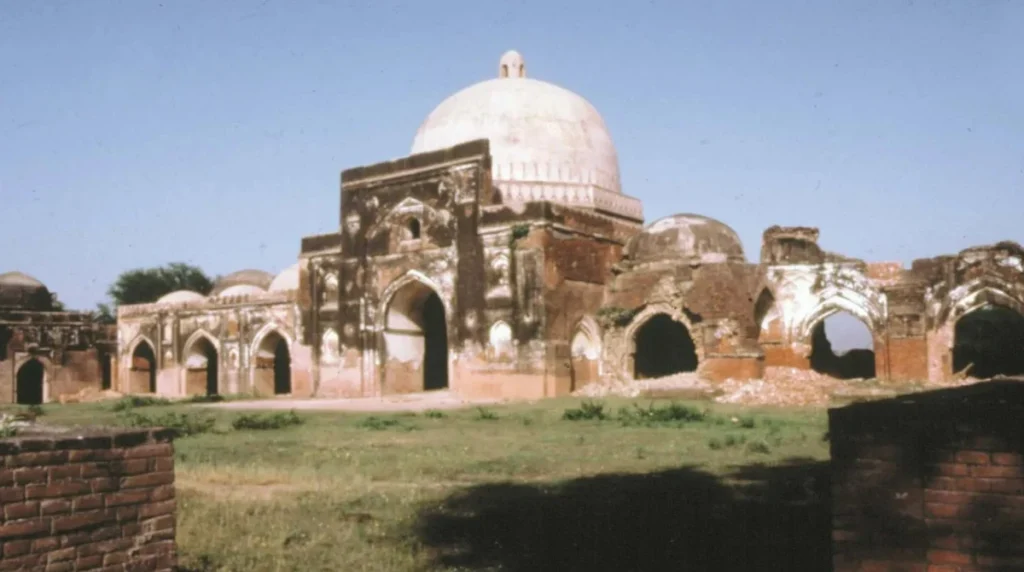“Discover Panipat District, a historic city blending rich heritage with industrial growth. Explore its legacy, vibrant economy, and bright future opportunities.”

Panipat District: A Historical and Cultural Overview
Nestled in the northern state of Haryana, India, Panipat District is a region steeped in history and cultural significance. With a history dating back centuries, this district has played a pivotal role in shaping India’s past, present, and future.
Historical Significance:
Panipat District is renowned for its three major battles, collectively referred to as the “Three Battles of Panipat.” These battles, fought in 1526, 1556, and 1761, had far-reaching consequences for the Indian subcontinent. The first battle saw Babur, the founder of the Mughal Empire, defeating Ibrahim Lodhi and establishing Mughal rule in India. The second battle witnessed Akbar’s ascension to power, solidifying the Mughal dynasty. The third battle marked the decline of the Mughal Empire and the rise of the Maratha Empire.
Cultural Heritage:
The district’s cultural heritage is a blend of various influences, ranging from the Mughals to the Marathas and beyond. This diverse heritage is reflected in the district’s architecture, art, and traditions. The Hemu Samadhi Sthal, dedicated to the legendary Hindu king Hemu who fought in the Second Battle of Panipat, stands as a symbol of local pride and valor.
Handicrafts and Textiles:
Panipat District is renowned for its thriving textile industry. It’s often referred to as the “City of Weavers” due to its traditional expertise in producing blankets, rugs, and carpets. The district’s handloom industry has been a source of livelihood for generations, contributing significantly to the local economy.
Economic Importance:
Apart from textiles, Panipat District plays a crucial role in agriculture and trade. The region’s fertile soil supports the cultivation of various crops, including wheat, sugarcane, and cotton. The district’s strategic location on the National Highway-44 has also transformed it into a hub for commercial activities and trade.
Tourist Attractions:
For history enthusiasts and tourists alike, Panipat District offers a range of attractions. The Panipat Museum provides an insightful journey through the battles that shaped India’s history. The Kabuli Bagh Mosque, built by Babur, stands as a testament to the Mughal architectural style. The Salar Gunj Gate, another historical site, showcases intricate artwork and design.
Modern Panipat:
While deeply connected to its history, Panipat District has also embraced modernity. Rapid urbanization and industrialization have transformed the region’s landscape. The district’s proximity to Delhi and its status as an industrial center have attracted businesses and contributed to its economic growth.
In conclusion, Panipat District is more than just a geographical location; it’s a repository of historical events, cultural heritage, and economic significance. From the echoes of the battles that shaped India’s destiny to the bustling textile industry, the district continues to thrive as a blend of tradition and progress. As visitors step into Panipat, they are greeted not only by its vibrant present but also by the echoes of its storied past.
Famous Places in Panipat District
Paanipat District boasts a range of famous places that showcase its historical significance and cultural heritage. From battlegrounds to architectural wonders, here are some must-visit destinations:
Panipat Museum: Delve into the district’s historical battles through artifacts, paintings, and exhibits at the Panipat Museum. It offers a comprehensive overview of the three battles that shaped India’s destiny.
Kabuli Bagh Mosque: Built by Babur, the founder of the Mughal Empire, this mosque is known for its exquisite Mughal architecture. Intricate designs, calligraphy, and a serene ambiance make it a captivating site for history and architecture enthusiasts.
Hemu Samadhi Sthal: Pay homage to Hemu, the brave Hindu king who fought valiantly in the Second Battle of Panipat. This memorial site stands as a testament to his valor and sacrifice.
Salar Gunj Gate: This historical gateway, adorned with intricate artwork, is a reminder of Paanipat’s glorious past. The Salar Gunj Gate is a prime example of the district’s architectural heritage.
Dev Devi Talab: A serene and picturesque lake, Dev Devi Talab offers a tranquil escape from the city’s hustle and bustle. It’s a popular spot for locals and visitors to relax and enjoy nature.
Kala Amb: This monument stands at the site where Akbar administered justice during his reign. The structure’s architectural elements and historical importance make it a significant place to visit.
Tomb of Bu-Ali Shah Kalandar: A revered Sufi saint, Bu-Ali Shah Kalandar’s tomb is a spiritual destination. The site is known for its peaceful atmosphere and attracts devotees seeking blessings.
Kala Amb Park: A serene park situated near Kala Amb, this location offers a blend of history and nature. It’s a perfect spot for picnics and relaxation.
Panipat Thermal Power Station: For those interested in industrial infrastructure, the Paanipat Thermal Power Station is an engineering marvel worth visiting. The massive power plant contributes significantly to the region’s energy needs.
Bal Bhawan: A recreational space for children, Bal Bhawan offers various engaging activities, workshops, and play areas. It’s a great place for families to spend quality time together.
From reflecting on the battles that shaped India’s fate to exploring architectural gems and enjoying serene landscapes, Panipat District’s famous places offer a diverse range of experiences. Whether you’re a history buff, an architecture enthusiast, or simply seeking a peaceful getaway, these destinations are sure to leave an indelible mark on your journey through this culturally rich region.
Read More :-
Panchkula District: A Gateway to Growth, Innovation & Nature
